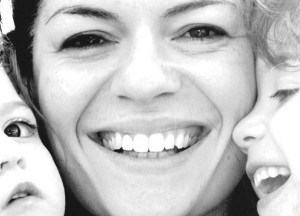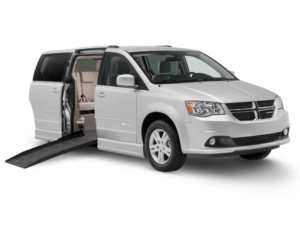 Parents are all over the board when it comes to how they teach their kids about disabilities. Some scold their kids when they ask what’s wrong when a person with a disability passes by, and other parents are totally cool with letting their kids run around and approach us at will. No two parenting techniques are alike.
Parents are all over the board when it comes to how they teach their kids about disabilities. Some scold their kids when they ask what’s wrong when a person with a disability passes by, and other parents are totally cool with letting their kids run around and approach us at will. No two parenting techniques are alike.
But there are a few things that are repeated. From telling their child to always look away or giving them a generic viewpoint of people with disabilities, mistakes on how to talk about us are abound. Since even the most well-meaning parent can accidentally flub up, here are 10 ways to help give your kid a leg up on how to think differently about disabilities.
1) Answering “Why can’t they walk?”
One of the most common questions kids ask when they see someone who uses a wheelchair is this, “Why can’t they walk?” Kids are naturally curious and have no filter, which are without question one of their best and worst qualities. If your child is younger, saying, “They just have an owie,” can be enough.
If they’re older however, just be honest. “I don’t know, baby, but most likely it’s because their nerves,” is all you need to say. My 6-year-old niece is a great example. She’s still too young to understand the concept of a spinal cord injury, so I just tell her my legs just don’t listen to me anymore, and she understand it completely.
But what’s great is once they fully understand, fear is erased.
2) Don’t get mad when they get curious.
While it’s great so many parents want to make sure their kids don’t offend us, which for some kids is a legitimate concern when it comes to sensitive people with disabilities, getting angry with your child when they ask questions about our disability should be avoided. Fear, shame or embarrassment is not what you want your kids to feel in the presence of disability. I hear kids ask their moms about me all the time. Cutest thing ever.
3) Being different isn’t a negative thing.
Instead of putting a “sad story” spin on disability whenever they inquire about someone, saying something along the lines of, “But it’s ok.” “The world is full of people who are different,” is vital. We all get around in our own ways. As long as we get there is the important part.
4) Always ask before helping.
A lot of well-meaning parents like to teach their kids to help us whenever possible. But it’s just as important to teach them to ask before helping so they can appreciate our autonomy, and respect us as such. Teaching your child to automatically jump to our aid is kind, but it can make it harder for them to see us as a person apart from the chair. Letting them know we can do many things on our own is a huge lesson for kids.
5) Our wheelchairs aren’t oversized strollers.
Seeing a wheelchair as our “legs” is another big lesson to drive home. Kids can come up with some hysterical words when referring to a wheelchair – a mini car, a wagon, a “what’s that” (my personal favorite), but don’t let them go on thinking of our wheelchair as a stroller. Kids like to, but driving home the notion of a wheelchair as being an empowering object, not one that symbolizes helplessness, can make a huge impact.
6) Be careful how you react yourself.
It’s no secret kids are sponges and instantly sense whatever mom or dad is feeling. Feeling nervous, awkward or afraid around people with disabilities will only make your kids feel exactly the same way. Try to put those feelings aside in the best interest of your kids. Respond positively and calmly when encountering a person with a disability and they’ll do the same (and hopefully into adulthood too).
7) A 10-second stare is ok. I promise.
When it comes to staring, kids get a “Get of Jail Free” card. At least that’s how I feel about things. As long as it’s not a long drawn out stare that is, which in that case you should tell them, “Looking is ok, but not too long.” I say this because it always saddens my heart whenever I see a parent scold their children for looking at a person with a disability for a brief moment. Kids are shiny new people learning about the world. Their innocent glances are 100 percent ok.
8) We aren’t in pain.
When I told my niece, “My neck has an owie. That’s why Aunty Tiffy can’t walk,” her first response was, “Well does it hurt?” Kids are just learning about the human body and the double-meaning of words too. By saying “I hurt my neck,” she heard “hurt” and equated “pain.” While some of us do have some awful chronic pain, letting your kids know a disability doesn’t necessarily equate to physical pain can take a definite load off their mind.
9) We can be awesome too.
Whenever possible, showing your child a movie, book or play with a positive portrayal of disability can make a huge difference. Sad movies about skiers who break their necks, then fall in love with a pilot who ends up dying in a crash is not such a good movie to show. They need to see us involved, having fun, even dare I say cool.
While it can be hard finding children’s books with a positive disability spin, they’re out there. Arlen, Marvelous Mercer, Saddle Sore, Cinderella’s Magical Wheelchair and Mama Zooms are some good reads (click for more). And a few good kids movies or shows to check out in the same vein include Miracle in Lane 2, a movie with a young adult in a wheelchair who dreams of winning trophies like his brother, Dragon Tales, a cartoon with a character who uses a wheelchair and Pinky Dinky Doo, an animated series with one of the main characters having a friend with a disability. **(Win one of these books by sharing this article on Facebook, google + or twitter, but make sure you tag or mention us so we know its you).
10) Our chairs aren’t glued to our butts.
I’ve always felt every child needs to see someone in a wheelchair get out of their wheelchair just once. Maybe onto a couch, or even better – into a pool or onto a motorcycle – leaving their wheelchair behind, just so they can see we are a person first, wheelchair-user second.
The first time my niece saw me get out of my chair and onto the couch was at Christmas when she was 2-years-old. Her eyes widened and she was deliriously happy when she saw me get out. I think she saw it as breaking free (I don’t think she thought it was even possible until that point).
Parenting is a huge responsibility, and molding your kids into hopefully soon-to-be awesome adults is the end goal. I’ve met a handful of these adults who were raised in a disability-positive environment and they have been some of the most amazing people I’ve ever met. If your child ends up being one of these very people, you’ve done a parenting job well done.
And remember, these above tips are mine alone. Not all people with disabilities may agree on these recommendations. Whenever possible, ask people with disabilities in your life for any input or tips. There’s knowledge to be learned from everyone.
How do you teach kids about disability?
**The Fine Print: Four (4) winners will be announced August 16 at noon EST. Each entry will be assigned a unique number then chosen using random.org.

Find your perfect Wheelchair Van
Select from thousands of wheelchair vans for sale from hundreds of nationwide dealers
The Mobility Resource has one of the largest selections of Dodge, Toyota, Chrysler, Honda, Ford, Chevrolet wheelchair vans













Tweet
Share https://www.themobilityresource.com/blog/post/10-things-to-teach-your-kids-about-disabilities/